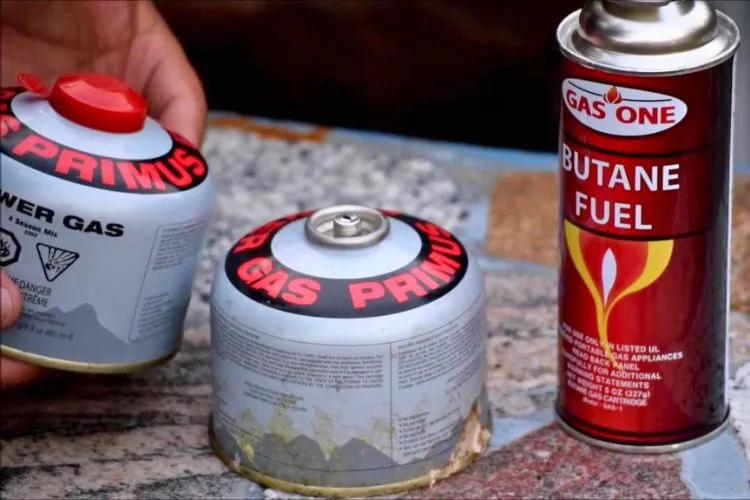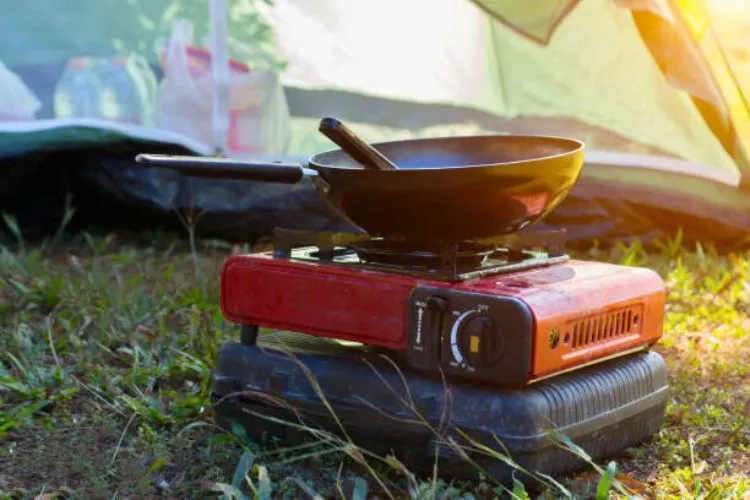Butane, a colorless and odorless gas, brings immense comfort and functionality to our lives.
Often used as a fuel for lighters, camping stoves, and in aerosol cans, it’s a ubiquitous partner in our daily routines.
However, is butane safe to use indoors?
Well, the use of butane carries potential risks, especially when used indoors.

For this reason, understanding how to safely handle butane can save you from hazardous situations.
Is butane safe to use indoors?
Butane can be used safely indoors with careful handling and proper precautions. However, it is crucial to use appliances specifically designed for indoor use, ensuring adequate ventilation, and regular inspections of the appliance to prevent leaks or damages.
Butane stoves particularly can give off carbon monoxide, an odorless and colorless gas, which can be harmful or even fatal without proper ventilation. Therefore, while butane can be used indoors, it is vital to prioritize safety practices to prevent potential risks.
The Risks of Butane Use Indoors
While butane is a practical source of fuel, it does come with significant dangers if used negligently, particularly indoors. The first danger stems from its flammability.
As a highly flammable gas, butane can pose the risk of causing explosions or fires if not handled properly, especially in confined spaces.

Moreover, using butane in an unventilated area can lead to an increased risk of carbon monoxide poisoning. Butane stoves produce carbon monoxide, an odorless and colorless gas that can produce flu-like symptoms at low concentrations and can even be fatal at high levels.
Another risk comes from oxygen depletion. When oxygen becomes scarce due to inefficient ventilation, butane can produce carbon monoxide instead of carbon dioxide, thus creating a life-threatening environment.
How to Use Butane Appliances Safely Indoors?
Sure, I apologize for any confusion earlier. Here’s an enhanced version for safely using butane appliances indoors with added details and organized into subsections:
Butane appliances are convenient for various indoor uses, providing heat and fuel for a range of residential applications. However, their improper usage can pose risks. This guide will help ensure the safe usage of these appliances indoors.
Understanding Butane: A Background
Gaining a basic understanding of butane’s properties and behaviors can help in using butane devices efficiently and safely.

Proper Ventilation: Key to Safe Usage
When using any fuel-burning appliance indoor, maintaining good ventilation is critical. Butane combustion produces water vapor and carbon dioxide, and can produce carbon monoxide in inadequate oxygen levels. Explore how to ensure proper ventilation and signs of poor ventilation.
Identifying and Rectifying Leaks
Butane is heavier than air and may accumulate at floor level in case of leaks. Develop an understanding of how to identify signs of butane leaks and what immediate actions should be taken.
Regular Inspection of Butane Appliance
Regularly inspecting and maintaining appliances can significantly reduce the risk of accidents. Uncover a routine inspection checklist and preventive maintenance steps for indoor butane appliances.
The Role of Carbon Monoxide Detectors
Having a functioning carbon monoxide detector is paramount when using butane appliances indoors. Dive into why a CO detector is essential, its functions, and appropriate installation locations.
Additional Precautions
Beyond the essentials, there are additional steps that homeowners can take to ensure their safety when using butane appliances indoors. These might include proper storage of butane and emergency procedures in case of an accident.
Safety should always be prioritized when using butane appliances indoors. By understanding the associated risks and taking the necessary precautions, butane use indoors can be secure and efficient.
Comparing Butane vs Propane for Indoor Use
Interestingly, both butane and propane share a similar chemical makeup, serving as a useful source of heating. The main difference is that butane generates slightly more heat than propane.
This could make it appear like the better option. But propane is often considered safer for using indoors due to its lower carbon monoxide emissions as compared to butane.
When choosing the right fuel for your indoor needs, users should consider the safety, efficiency, and suitability of both options to make an informed decision.
Tips for Safe Indoor Emergency Cooking
In emergency situations, butane stoves could be a reliable heat source. Following rigorous safety measures is paramount. Vent the area suitably, never leave the stove unattended, and ensure it’s turned off immediately after use.

While butane can be a lifeline in emergencies, for regular indoor use, consider alternative cooking methods. Electrical appliances, induction stovetops, and even outdoor barbecues could be safer substitutes. It’s essential to prioritize safety while fulfilling our fundamental needs in the face of an emergency.
Frequently Asked Questions (FAQs)
Can I use a butane camping stove indoors?
While butane camp stoves are handy, they’re typically designed to be used outdoors and therefore may pose risk while used indoors. If you must use one in an emergency, ensure the area is well-ventilated.
How can I detect butane leaks in my home?
Since butane is heavier than air, a leak may be detected at floor level. Look for signs of fatigue on appliances and listen for hissing sounds that could indicate leakage.
What should I do if I suspect carbon monoxide poisoning while using butane indoors?
If you suspect carbon monoxide poisoning, move to fresh air immediately and seek medical help.
Are there safer alternatives to butane for indoor use?
Electrical appliances or natural gas are some safer alternatives as they produce less carbon monoxide as compared to butane.
What are the best practices for storing butane canisters?
Butane canisters should be stored in cool and ventilated areas away from heat sources, sunlight or any type open flames.
Conclusion:
To summarize, the use of butane indoors can carry significant risks if mishandled. With the right precautions and regular equipment checks, you can drastically reduce the hazards. Education and awareness about the safety of butane use indoors can help ensure a safer household.
Furthermore, considering safer substitutes for butane for regular indoor use is a prudent approach. Remember, it’s always essential to prioritize our safety above all else.


